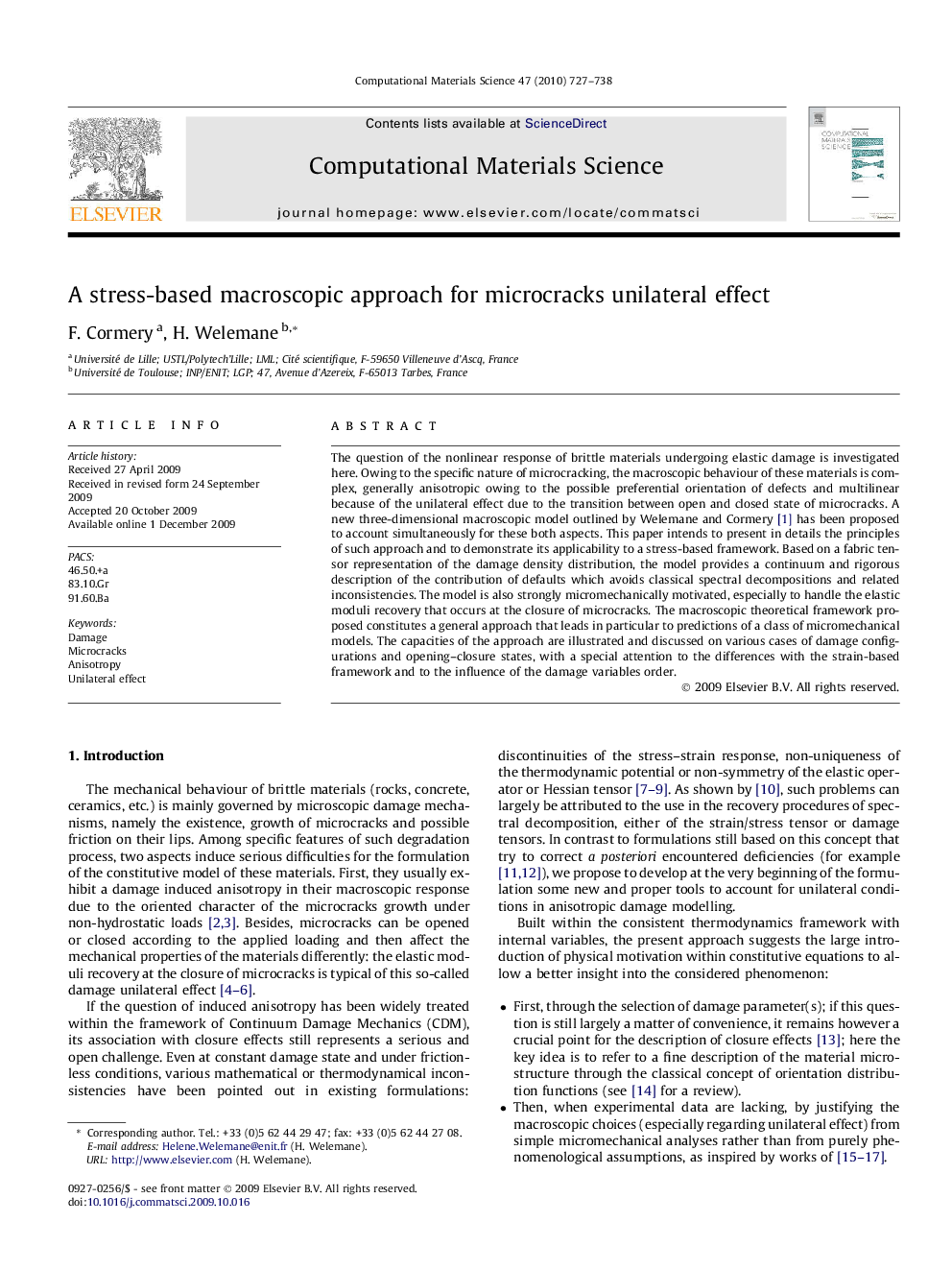| Article ID | Journal | Published Year | Pages | File Type |
|---|---|---|---|---|
| 1563364 | Computational Materials Science | 2010 | 12 Pages |
The question of the nonlinear response of brittle materials undergoing elastic damage is investigated here. Owing to the specific nature of microcracking, the macroscopic behaviour of these materials is complex, generally anisotropic owing to the possible preferential orientation of defects and multilinear because of the unilateral effect due to the transition between open and closed state of microcracks. A new three-dimensional macroscopic model outlined by Welemane and Cormery [1] has been proposed to account simultaneously for these both aspects. This paper intends to present in details the principles of such approach and to demonstrate its applicability to a stress-based framework. Based on a fabric tensor representation of the damage density distribution, the model provides a continuum and rigorous description of the contribution of defaults which avoids classical spectral decompositions and related inconsistencies. The model is also strongly micromechanically motivated, especially to handle the elastic moduli recovery that occurs at the closure of microcracks. The macroscopic theoretical framework proposed constitutes a general approach that leads in particular to predictions of a class of micromechanical models. The capacities of the approach are illustrated and discussed on various cases of damage configurations and opening–closure states, with a special attention to the differences with the strain-based framework and to the influence of the damage variables order.
